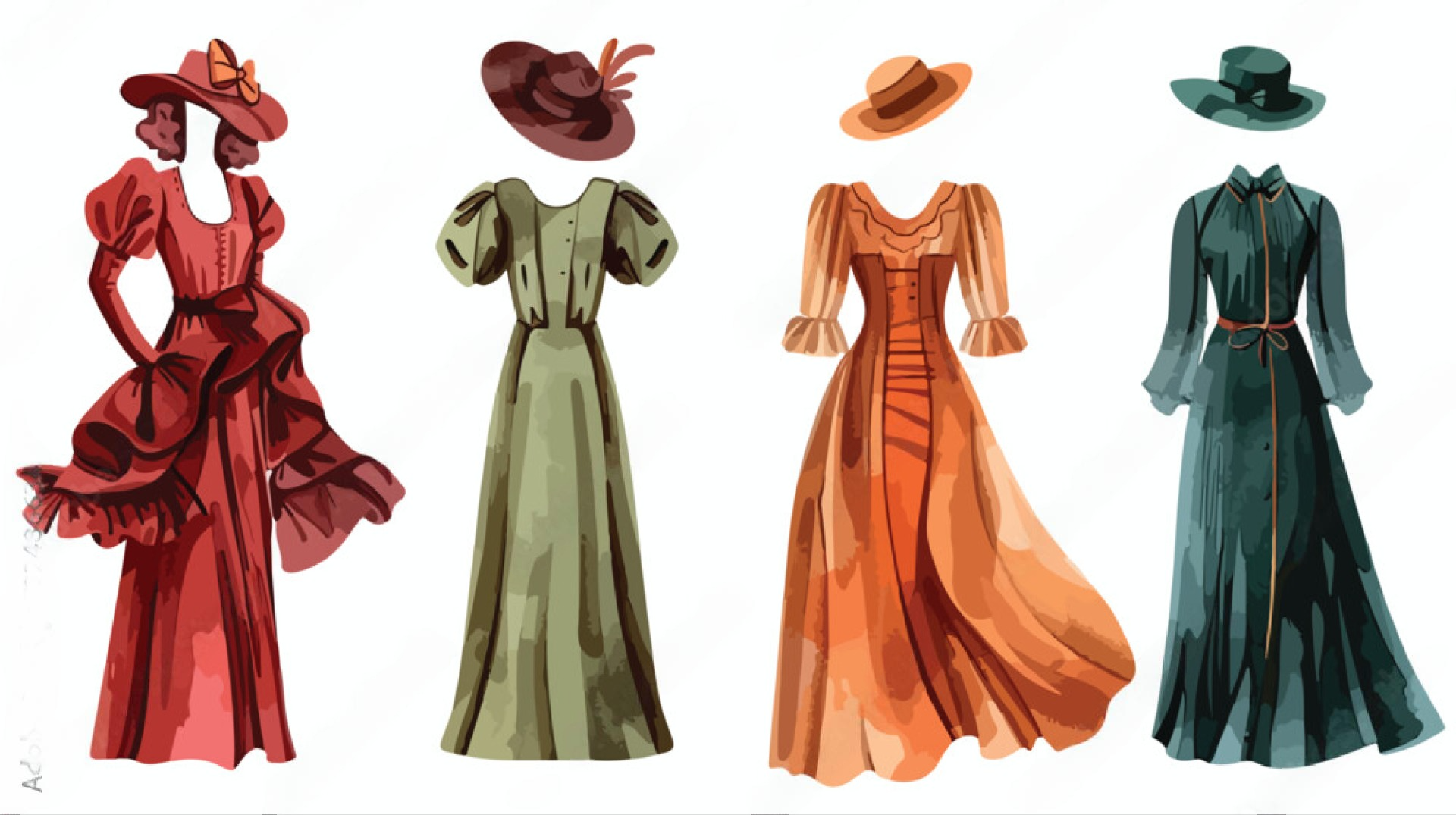This post is about the revolutionary fashion history timeline in style covering from the Middle Ages to the modern era(21st Century). Fashion, a dynamic reflection of culture and identity, has woven an intricate tapestry throughout the ages, each thread representing a chapter in the ever-evolving story of style. From the grandeur of the Prehistoric Era to the pulsating beat of the 21st century, the revolutionary fashion history timeline in style is a fascinating journey through time, unraveling the captivating narrative of how clothing has shaped and mirrored societies across epochs.
Significance of Exploring Fashion Evolution: Revolutionary Fashion History Timeline in Style
Embarking on a journey through the annals of fashion history is not merely a stroll down memory lane; it’s a profound exploration of the forces that have sculpted our collective aesthetic consciousness. By delving into the roots of fashion evolution, we uncover the layers of influence, from the opulent garments of medieval courts to the cutting-edge designs of the digital age.
Join me as we travel through time, navigating the ebbs and flows of style, and discovering the threads connecting the sartorial tapestry from the Middle Ages to the modern era. The revolutionary fashion history timeline beckons, inviting us to unravel the secrets of attire that have defined and redefined cultures across the centuries.
Table of Contents
A Tapestry of Elegance: Fashion in the Middle Ages (500 CE to 1500 CE)
The era known as the “Middle Ages” is often referred to as the “Medieval Period,” and feudalism, chivalry, distinctive tapestries, climate considerations, culture, and social hierarchy mark its fashion. The attire in Middle Eastern nations has remained remarkably consistent for centuries owing to their function of shielding against heat, dust, and intense sunlight. These garments were designed to envelop the entire body and are known by different names across various countries, despite serving similar purposes.
One example is the “caftan,” a traditional garment from ancient cultures in Persia, India, Mongolia, and Asian Russia. It’s an open coat-like outfit historically termed “candys” or “kandys” in ancient Persia which was widely worn in colder climates like those found in Mongolia and China. The clothing worn during that period consisted of a loose shirt, robe or chemise, draped cloak, wide trousers, and a headscarf. Variations of these can still be observed in cities like Cairo, Istanbul, and Damascus.

There is a tradition for women to fully cover themselves and veil their faces when venturing out in public; this practice is commonly referred to as burka or chador. The traditional masculine Arab headdress known as kaffiyeh involves the folding of a square fabric (be it cotton, linen wool, or silk) into a triangle, which is then placed on the head so that one point falls over each shoulder while the third comes down the back. However, interestingly enough, today this attire also doubles up as business wear.
Fashion in Medieval Europe
Fashion has always been a distinguishing factor in European society, with relatively simple and unembellished dresses up until around 1350, when tailoring became more prominent. This marked the shift towards tailored clothing for a better fit and the use of high-quality fabrics imported from Italy and other eastern regions.
Women’s Fashion: Gowns and Head Coverings
Clothing for women during the period was defined by gowns featuring well-fitted bodices and flowing skirts. The houppelande, a style with wide sleeves which became popular later on, also gained popularity. Head coverings like veils and wimples were widespread as they symbolized the modesty expected of women. Noblewomen frequently adorned their headdresses with jewels and veils, while men commonly wore tunics, hose, and elaborate cloaks. Luxurious fabrics like velvet and silk were widely utilized among the upper class. Fur served both as trimmings in garments and for warmth; wearing fur with the exterior side showcased one’s wealth and high status within society.

Knightly Splendor: Armor and Heraldry
In medieval times, fashion went beyond clothing to encompass armor crafted from metal plates, chainmail, and leather. This not only provided protection but also displayed symbols that held personal significance for knights. They adorned their shields, surcoats, and helmets with emblems representing their individuality and allegiances. Conversely, commoners, such as peasants and artisans, favored functional and unpretentious attire like simple tunics, hooded cloaks, and practical footwear. From the shining armor of the knights to the modest tunic of the peasantry, the garments worn in medieval Europe narrate a tale of a past era where gracefulness and social hierarchy were intricately intertwined into everyday life.

Renaissance Elegance to Early Modern Splendor (1500 CE to 1800 CE)
In this period, fashion became an art reflecting cultural rebirth, societal shifts, and a blossoming sense of individual expression. Whereas the humanist concept of the Renaissance had led to figure display and elegance, the new modes were influenced by the Reformation of northern Europe, giving rise to darker colors, heavier materials, and bulky garments padded to conceal the figure.
Renaissance Revival: A Rebirth of Artistry
Nobility and Aristocracy
The Renaissance era saw a resurgence of classical principles, and fashion reflected this intellectual and artistic revival. The upper class embraced lavish clothing crafted from opulent materials like velvet, silk, and brocade. Both men and women adorned themselves with ornate embroidery, delicate lacework, and precious jewels, presenting an extravagant visual display.
Men’s Doublets and Hose
Influenced by Venetian fashion, men commonly wore a snug-fitting jacket called doublet over a shirt and paired it with fitted trousers known as hose. The wide-legged Venetian trousers were also popularly worn with doublets during this period.

Silhouettes and Codpieces
Fashion has showcased unique and eye-catching silhouettes. Women’s clothing included dresses with high waistlines and full skirts, accentuating a slim waist. In contrast, men’s fashion emphasized wider shoulders and a flared silhouette, often paired with the noticeable codpiece, a stylish flap or pouch enhancing the front of men’s trousers for both practical and ornamental purposes.
Women’s Farthingales and Lace
The female figure was constrained through the use of a tight underbodice with metal or whalebone strips in the seams, creating a small waist and slender torso; this was known as the Corset. In contrast, the skirt took on a cone or inverted V silhouette by being draped over a petticoat made from canvas and inset at intervals with circular hoops of wicker, also known as Farthingale. Lace became highly sought-after and was used to embellish collars, cuffs, and delicate accessories.
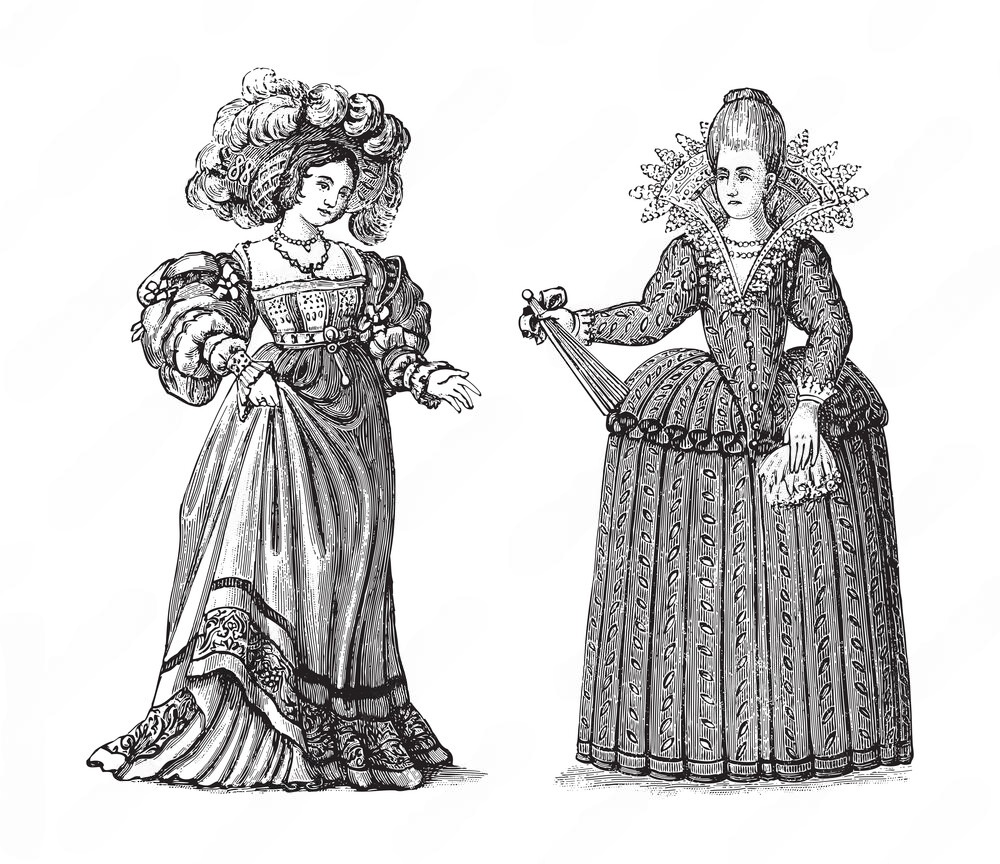
Accessories and Footwear
The fashion of this era was defined by the introduction of the ruff collar from Spain, which added an elegant touch to both men’s and women’s attire. Men adorned themselves with large beaver felt or velvet hats embellished with colorful ostrich plumes. The popular footwear choice at the time was soft leather boots with platform soles, high heels, and lace-edged boot hose that cascaded over immense bucket tops.
Baroque Extravagance
As the Renaissance gave way to the Baroque era, fashion witnessed a transition from the restrained elegance of the former to an era of opulence and grandeur. Baroque fashion embraced elaborate embroidery, lace, and pearls, reflecting the extravagant tastes of the aristocracy. Sumptuary laws attempted to regulate extravagant clothing, underscoring the societal impact of fashion during this period.
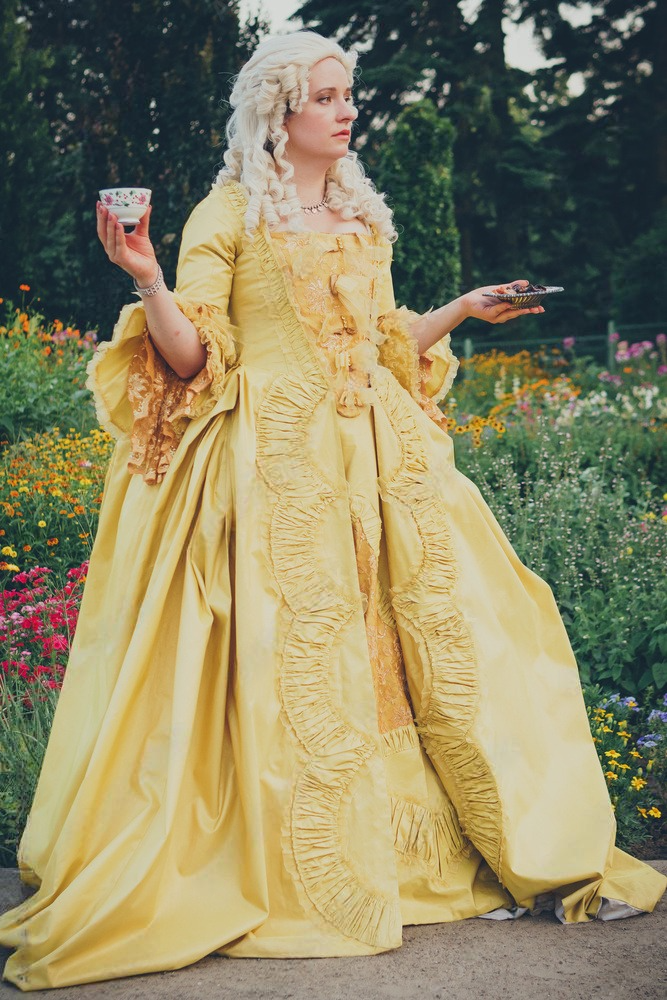
Rococo Whimsy
The 18th-century Rococo period ushered in an era of lightness and frivolity. Fashion, much like the art of the time, embraced asymmetry, pastel hues, and delicate fabrics. Women’s attire featured voluminous skirts adorned with ribbons and bows, while men donned elaborately embroidered waistcoats. The Rococo era celebrated a departure from the strict formality of previous centuries, embodying a more playful and romantic spirit.
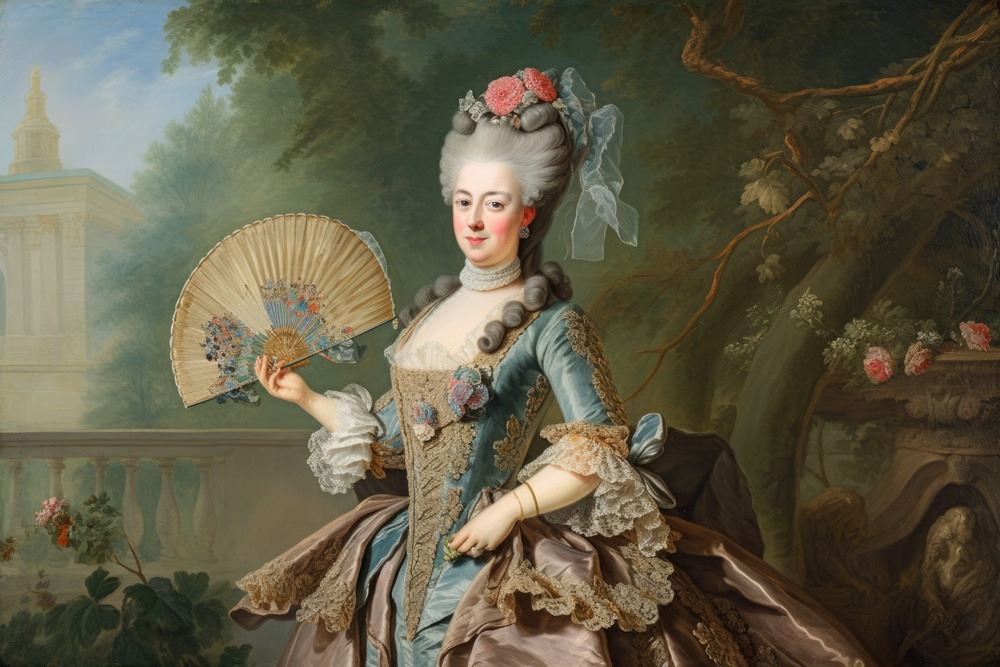
Industrial Revolution and Victorian Sobriety
The 19th century witnessed the seismic shift brought about by the Industrial Revolution, impacting every facet of life, including fashion. The Victorian era, characterized by Queen Victoria’s reign, was marked by a return to sobriety in dress. Corsets and crinolines defined women’s silhouettes, while men embraced tailored suits. The rise of department stores and ready-made clothing democratized fashion, making it accessible to a broader audience.
From the intricate detailing of the doublet to the grandeur of the farthingale, each costume tells a unique story of a period when fashion became a canvas for artistic and societal evolution.
Revealing the Splendor of 19th and 20th Century Trends
The fashion landscape we know today has been significantly shaped by the distinct characteristics and societal upheavals of the 19th and 20th centuries.
The 19th Century: A Tapestry of Elegance
Regency Era Elegance
The early 19th century dawned with the Regency era (1800–1837), influenced by Jane Austen’s novels and characterized by graceful aesthetics. Women’s fashion embraced high empire waistlines, flowing silhouettes, and delicate fabrics like muslin. The elegance of the Regency was defined by pastel hues and intricate embroidery, reflecting a preference for refined femininity. Men’s attire gradually became standardized for different occasions, times of day, and social classes. The mandatory tailcoat sported a waisted and padded chest, paired with a waistcoat and tightly-fitted pantaloons.

Victorian Opulence
The mid-19th century saw the beginning of the lavish Victorian era (1837–1901), which marked a shift from the simplicity of the Regency period. During this time, Victorian women embraced crinolines, corsets, and bustles to achieve an exaggerated hourglass figure. Luxurious fabrics like silk and velvet, adorned with intricate lace and beadwork, became symbols of wealth and social status.
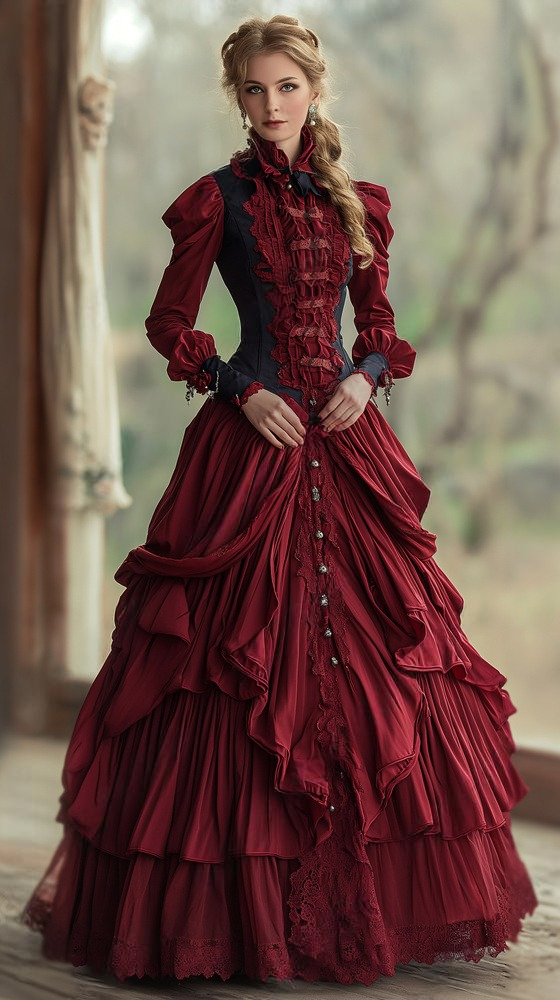
Starting in the 1840s, men’s attire became more subdued with black, shades of gray, blue, and white dominating their wardrobe choices. The formal black tailcoat was now reserved for evening events, while various types of tailcoats were paired with waistcoats along with looser trousers worn over boots during daytime occasions. Neckwear also took on a simpler look, featuring collars combined with neck scarves.
In the 1850s, a three-piece lounge suit replaced formal wear for informal gatherings. Despite wars and societal changes, elegant fashion remained popular among the bourgeoisie, who used style as a means to display luxury even amidst turmoil where men’s dress was restrained yet dignified, evolving at a slower pace when compared to vibrant, colorful trends in women’s fashion that changed rapidly in diverse styles.
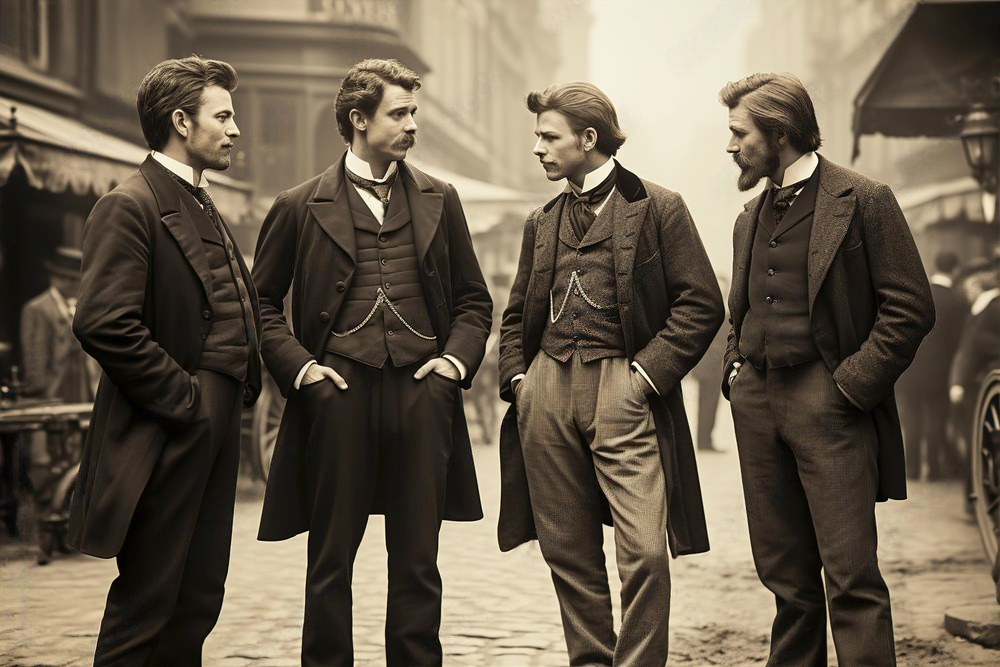
The 20th Century: Decades of Distinctive Styles
At the onset of the 20th century, there was a significant shift in women’s attire. The Jazz Age marked a time of liberation and an era characterized by transformative social norms.
Roaring Twenties (1920s): Jazz Age Glamour
The 1920s marked the rise of flapper dresses—short, fringed outfits that symbolized rebellion and women’s newfound independence. Accessories inspired by jazz, such as headbands and beaded necklaces, became iconic of the era.
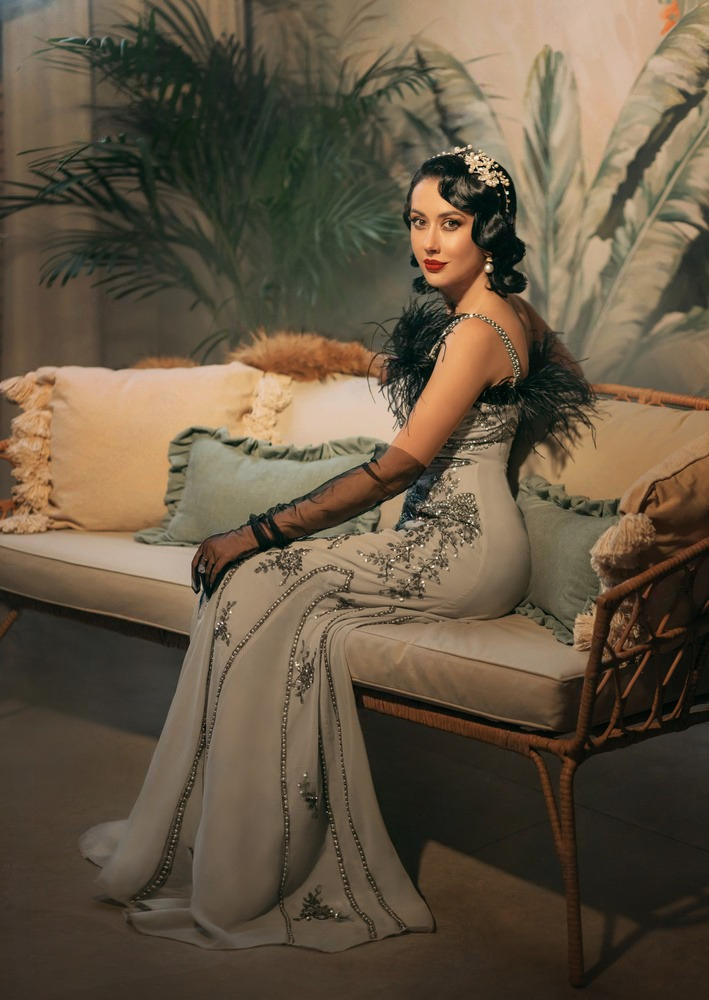
Conversely, men still sported a black frock coat with gray striped trousers for formal day wear and a black tailcoat with trousers and a white waistcoat for evening wear in the presence of ladies. In America, however, the tuxedo or dinner jacket was gaining popularity as a more comfortable alternative. For women in this decade, freedom in fashion mirrored their increasing opportunities to pursue careers, higher education, and professional occupations.

Revival of Femininity in the Thirties (1930s)
The 1930s saw a resurgence of femininity in fashion. While the ideal figure remained slender, the waistline reverted to its natural position. Furthermore, backless dresses and halter necklines gained popularity for evening wear styles.

World War II and Utility Fashion (1939–1945)
The impact of World War II had a profound effect on many aspects of life, including fashion. Due to rationing and the practical needs of the time, there was a shift towards utility dresses and clothing that emphasized functionality over extravagance. Both men’s and women’s civilian dress styles were heavily influenced by those in uniform during this period. Women wore practical knee-length skirts with square padded shoulder lines, while trousers became widely accepted for both civilians and military personnel.
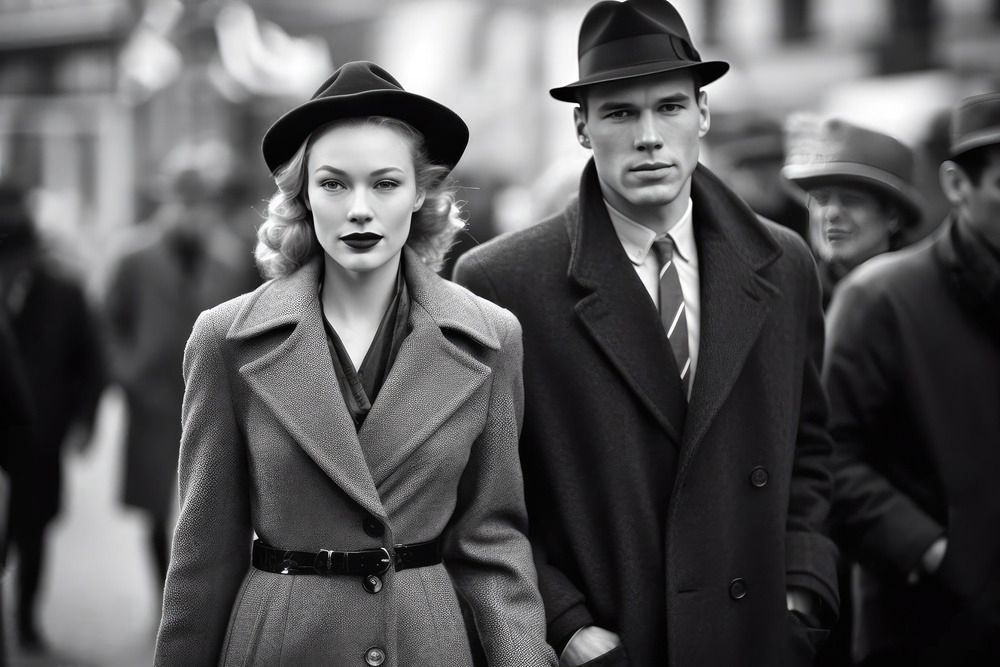
After the late 1940s, traditional etiquette guidelines regarding attire began to fade away as wide-scale advertising introduced fashion to everyone through modern marketing strategies. Technological advancements in synthetic textile fibers played an influential role in shaping modern fashion by making it possible to manufacture clothing more quickly and affordably.
Mid-Century Modernism (1950s)
The post-war period marked a shift towards mid-century modernism. Christian Dior’s “New Look” transformed women’s fashion, presenting a silhouette with a cinched waist and an expansive, voluminous skirt.

This design ethos embraced simplicity and clean lines as a departure from the austerity of wartime trends. The French designer launched his 1947 “Corolle” collection, that was quickly labeled the “New Look” by American media and featured a long, full skirt supported by cascading ruffles underneath, creating a slender waist and sloping shoulders to bring back femininity in style.
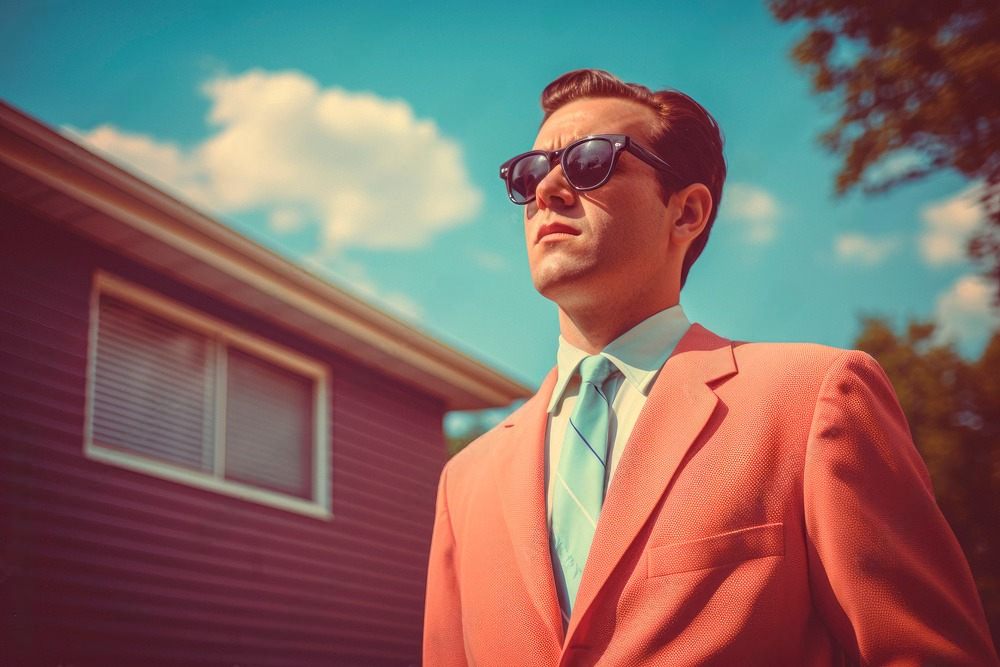
Swinging Sixties (1960s)
The style for the next decade of feminine fashions was established and later replaced by the emergence of miniskirts in the 1960s. These very short skirts made their debut in London by Mary Quant and were later introduced by André Courrèges in Paris.
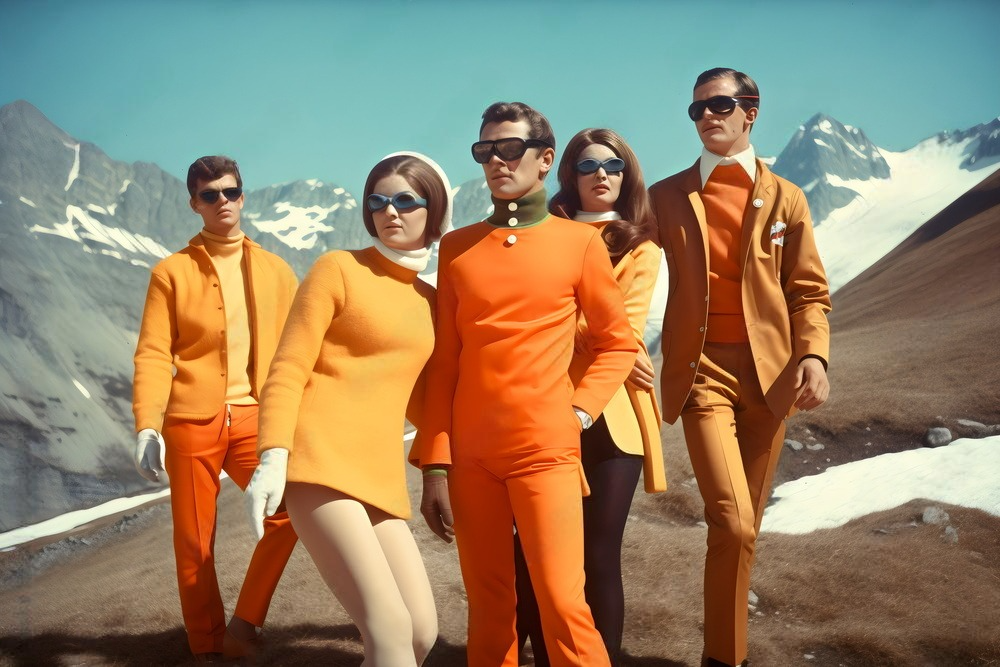
The cultural revolution of the 1960s had a profound impact on fashion, with bold patterns, vibrant colors, and mini-skirts becoming symbols of rebellion embraced by the youth-driven counterculture. Iconic figures like Twiggy and the Beatles set an eclectic tone for fashion during this dynamic period.
Punk Rock Rebellion (1970s–1980s)
Punk rock rose as a significant counter-culture force in the advancing century, impacting not only music but also fashion. Distressed attire, leather jackets, and unorthodox accessories epitomized a rebellious spirit and defiance of conventional standards during the 1970s and 1980s.
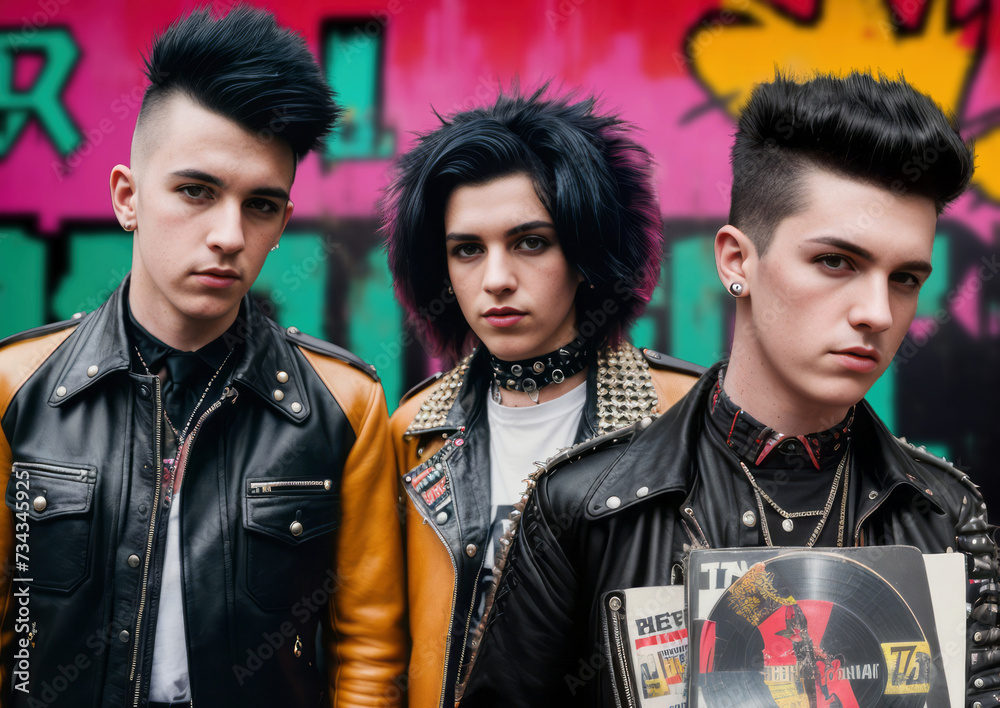
Additionally, there was an immense surge in the popularity of sleek, well-fitted suits with broad shoulders worn by women during the 1980s to convey empowerment and authority.
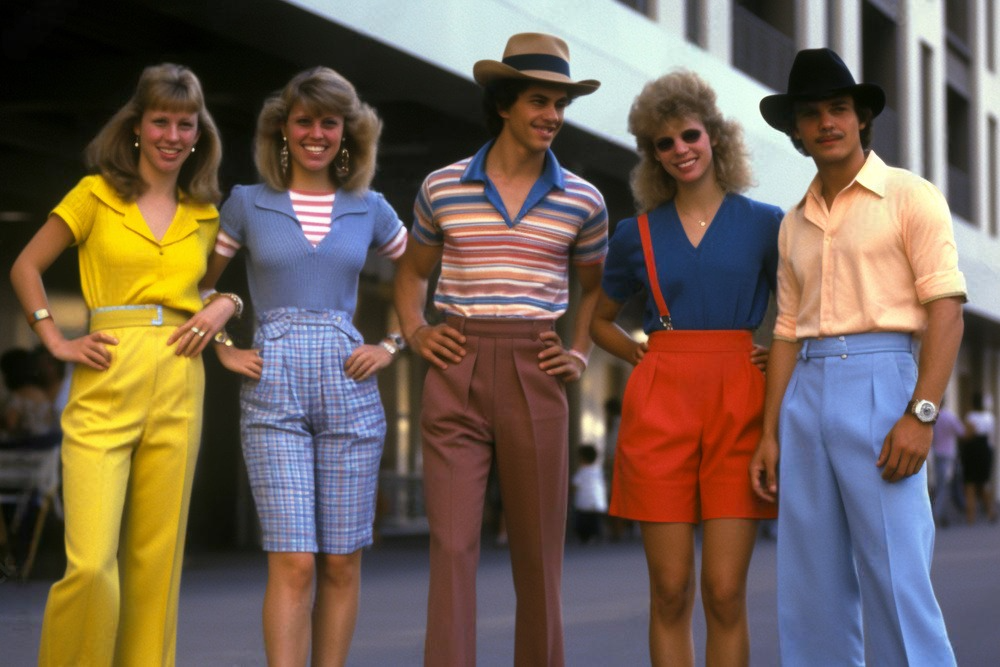
Eclectic Fashion (1990s)
The 1990s was a decade marked by diverse and eclectic fashion trends. Grunge fashion was popularized by the grunge music scene, this style was characterized by flannel shirts, oversized sweaters, and distressed denim. Denim was a ubiquitous fabric in the 1990s, with denim jackets, overalls, and even denim skirts making a comeback. The 1990s was a decade of fashion diversity, with a wide range of styles coexisting simultaneously. Whether it was the laid-back grunge look or the glamorous pop star aesthetic, this era celebrated individual expression and embraced a mix of influences from various subcultures.
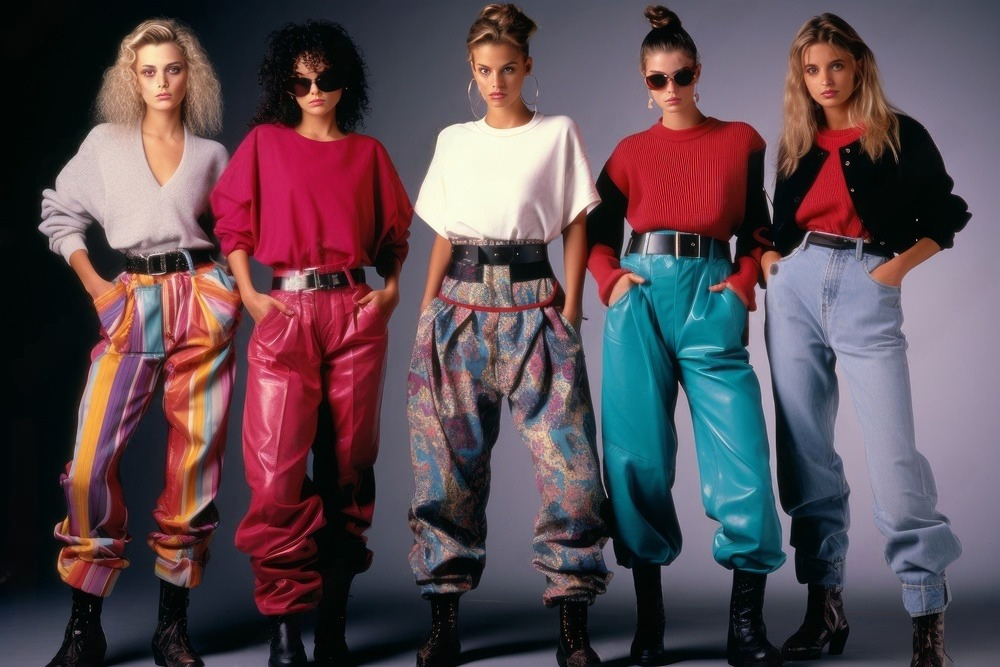
A Timeless Legacy: Bridging Past and Present: Revival of Vintage Fashion
The 21st-century fashion scene has embraced the allure of past eras, resulting in a resurgence of vintage trends. Retro elements from the 19th and 20th centuries have been skillfully woven into contemporary designs, effectively bridging the gap between historical elegance and modern style.
Sustainable Fashion: A Modern Ethos
In this acknowledgment of the past, the fashion industry is progressively adopting sustainable methods. Designers are incorporating environmentally friendly materials and ethical production techniques, in harmony with today’s focus on environmental awareness.
As we step into the 21st century, fashion has become a global phenomenon, influenced by a myriad of cultures and subcultures. Fast fashion and sustainability debates dominate the industry, while designers continually push boundaries, blurring the lines between fashion and art. The digital age has democratized fashion further, with social media platforms becoming runways for influencers and everyday fashion enthusiasts.
The journey from the Renaissance to the modern era unveils a captivating revolutionary fashion history timeline of style, each era weaving its unique thread into the fabric of fashion history. As we embrace the diversity of styles that have come before, we find ourselves standing at the intersection of tradition and innovation, where the ever-evolving world of fashion continues to shape and reflect the spirit of our times.
……………………….To Be Continued

